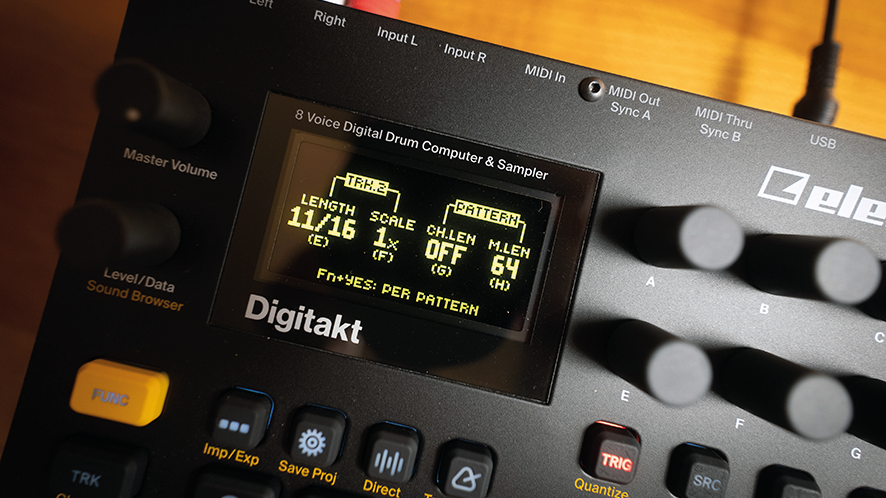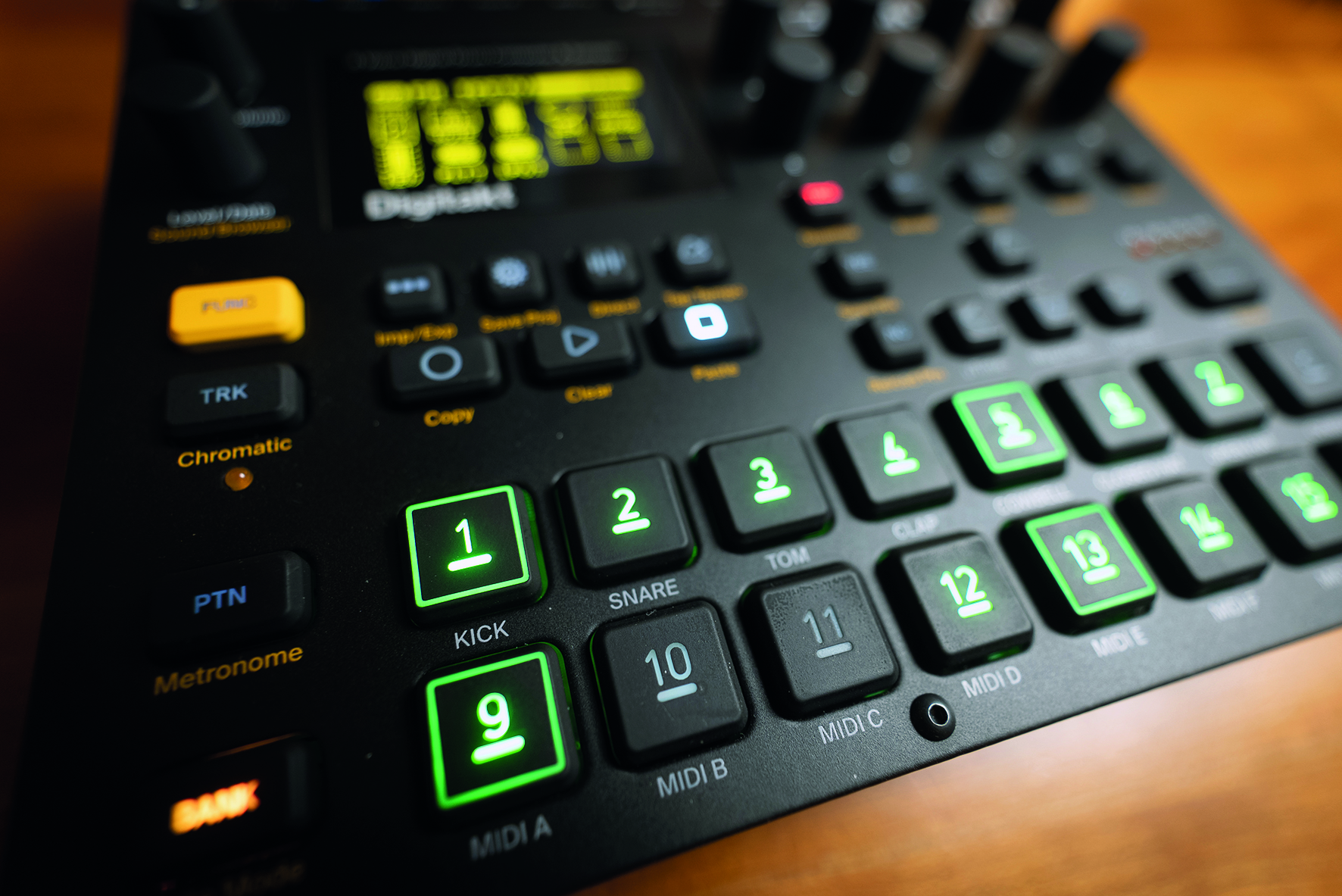Studio hacks: 9 inspiring tricks for hardware sequencing
Take your sequencing technique up a notch with these tips, tricks and techniques for getting the most out of your hardware

Whether you’re programming drum patterns or generating synth riffs, hardware sequencers, grooveboxes and drum machines are great creative tools.
1. Use LFOs!
Interesting sequences are all about subtle variations over time. If your sequencer has an LFO (or two), put it to use! The Digitakt’s recent 1.30 update added an additional LFO to each track. For instance, with a hi-hat track you could assign one LFO to sample start and another to filter cutoff. Let the LFOs run freely, and you have tons of easy variation.
2. Quantise when it makes sense
You want your beats to be tight, obviously. But too much of everything on the grid can sound boring. Sometimes just a few elements being dead on, like the 2 and 4 of a snare, can help anchor a beat so the other elements can have more “feel”. Even better, if your sequencer allows for partial quantisation, like the Digitakt, you can record freely and then apply gradual amounts of quantisation, per track, retaining the feel.
3. When programming beats, move notes off the grid!
Programming sequences is sometimes the way to go for fresh ideas. To bring the sequences to life, move notes subtly off grid. This especially helps with separating dominant hits, like the 2 and 4 of a snare. If multiple sounds line up on the 2, move them off grid subtly to create more interest in the combined sound. Your ears can easily detect sounds that are slightly off from each other, creating listener interest.

4. Probabilistic triggers
f you’re using an Elektron sequencer, you’re probably familiar with the idea of probabilistic triggers, or steps that trigger by chance. It’s an excellent method to create variation, potentially infinitely on short patterns.
The idea is to create your base pattern, and then add steps that have a chance to activate with each round. The easiest track to experiment with is a hi-hat. Set all 16 steps to active and make every other step have a 25% chance to trigger. You’ll have a base pattern, plus “chance-based fills’’ triggered with each revolution of the pattern. As with all features, a little goes a long way.
5. Use mutes for live arrangements
One of the main reasons to grab a hardware sequencer is the tactile, immediate feel you get. We like to build up patterns and then break them down via track mutes to create arrangements. Just dropping the kick out of a pattern will create a significant shift in energy in a mix.
Want all the hottest music and gear news, reviews, deals, features and more, direct to your inbox? Sign up here.
Think of the intro, verse, chorus, breakdown and outro all having different combos of mutes to create an arrangement. You can also do quick, inner-measure mutes on elements like hi-hats to break up the pattern even further for a bar or two. This works very well on busy kick tracks, too. Just a little change up can go a long way.
6. Use fills and performance tools
Fills and performance tools take your live arrangements to the next level. Some hardware devices make it easy for quick, random fills. The Arturia DrumBrute Impact has a repeater roll that just grabs the most recent 1/4 to 32nd note pattern to create fills.
Practice is needed! On the Elektron boxes, most have fill buttons that trigger notes designated under the “FILL” condition. You can also designate triggers to not occur when the fill button is pressed! This gives complex fill crafting, but takes almost as much time as crafting an entire beat.
7. Create polyrhythms with odd pattern lengths
Sequencers are great at generating new ideas that we normally wouldn’t attempt live. Polyrhythms can be easily made with sequencers that have custom step lengths, per track.
For instance, setting your hi-hat track to an odd number will create a significantly longer pattern. The trick is to have a couple of foundation sequences (maybe the kick and snare) and then set up the rest of the sounds to have odd step lengths. You can even adjust step length live during a performance for even more polyrhythmic spice!
8. Chain a filter to the output to create sweeping transitions
We like to chain a filter/distortion box to our groove boxes to adjust the feel of the arrangement beyond just simple mutes. The Analog Heat from Elektron, for example, allows you to sweep out the highs for a transition effect in the middle of a track. The added distortion options are also an awesome addition to the sound shaping of the patterns.
9. Per trigger sound variations
With Elektron boxes, you can change an incredible amount of parameters per step, creating rich and dynamic patterns from just a few steps. On the Digitakt, start with the sample itself. Per step, change the start position of the sample.
Try changing the sample direction for a step or two, as well. If you’re using a harmonically complex sample, the effect will be emphasised heavily. Take it a step further and adjust the filter cutoff per step. Changing the delay, reverb, and distortion settings per step will also create excellent shifts in pattern energy. Again, a little goes a long way!


Future Music is the number one magazine for today's producers. Packed with technique and technology we'll help you make great new music. All-access artist interviews, in-depth gear reviews, essential production tutorials and much more. Every marvellous monthly edition features reliable reviews of the latest and greatest hardware and software technology and techniques, unparalleled advice, in-depth interviews, sensational free samples and so much more to improve the experience and outcome of your music-making.
